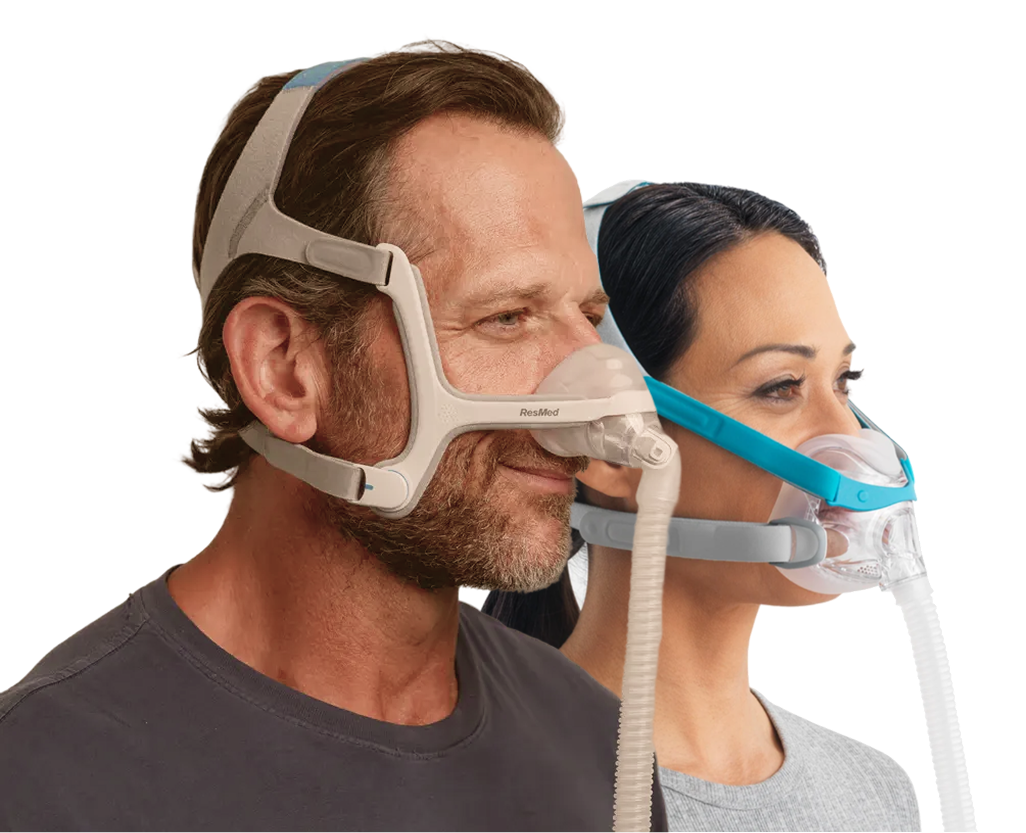The Philips DreamStation models, available at CPAP Discount Warehouse, offers different models tailored to specific needs. Understanding their key differences is crucial in selecting the right one. Here's a breakdown of the main differences between the DreamStation Auto BiPAP HumHT Cellular, DreamStation Auto CPAP HumHT Cellular, and DreamStation CPAP Pro HumidHT Cellular:
Type of Therapy
-
Auto BiPAP HumHT Cellular: Offers Bi-level Positive Airway Pressure (BiPAP), which provides two distinct pressure settings for inhalation (IPAP) and exhalation (EPAP). This is particularly beneficial for users with complex sleep apnea or who find continuous CPAP pressure uncomfortable.
-
Auto CPAP HumHT Cellular: Features automatic pressure adjustments throughout the night. It’s designed for a broad range of sleep apnea patients and is particularly useful for those whose pressure needs may vary during sleep.
-
CPAP Pro HumidHT Cellular: Delivers a fixed level of pressure as prescribed by a healthcare provider. This model is best suited for users with consistent pressure needs who prefer a straightforward CPAP therapy.

DreamStation Sleep Therapy System Configurations
|
DreamStation Auto CPAP |
DreamStation CPAP Pro |
DreamStation Auto BiPAP |
|
|
Modes |
Fixed CPAP CPAP-Check Auto-CPAP |
Fixed CPAP CPAP-Check |
Fixed CPAP Fixed BiPAP Auto-BiPAP |
|
Features |
EZ-Start Auto-Trial Opti-Start |
Fixed CPAP CPAP-Check |
EZ-Start |
|
Pressure Range |
4 to 20 cm H2O |
4 to 20 cm H2O |
4 to 25 cm H2O |
|
Flex Comfort |
C-Flex C-Flex+ A-Flex |
C-Flex C-Flex+ |
C-Flex C-Flex+ Bi-Flex |
|
Humidification Modes (3) |
Fixed Adaptive Heated Tube |
Fixed Adaptive Heated Tube |
Fixed Adaptive Heated Tube |
|
Mask Type Resistance Control |
Standard |
Standard |
Standard |
|
Ramp (0-45 minutes) |
Ramp SmartRamp |
Ramp SmartRamp |
Ramp SmartRamp |
|
Altitude Compensation |
Automatic |
Automatic |
Automatic |
|
Advanced Event Detection |
Standard |
Standard |
Standard |
|
Flow Waveforms |
Standard |
Standard |
Standard |
User Customization and Flexibility
-
Auto BiPAP: Provides the highest level of customization with two pressure settings, catering to more complex and varying breathing needs.
-
Auto CPAP: Offers flexibility with auto-adjusting pressure, adapting to the user's changing needs throughout the night.
-
CPAP Pro: Has less flexibility in terms of pressure changes, providing a constant, steady stream of air at a fixed pressure.
Suitability for Different Types of Sleep Apnea
-
Auto BiPAP: Especially effective for treating complex sleep apnea, including central sleep apnea or mixed sleep apnea. It's also a good choice for those who have difficulty tolerating higher CPAP pressures.
-
Auto CPAP and CPAP Pro: Both are generally used for treating Obstructive Sleep Apnea (OSA). The Auto CPAP is more adaptable for users with varying nightly needs, while the CPAP Pro is for those with a constant pressure requirement.
All Philips DreamStation models include a Heated Humidifier (HumHT) and Cellular connectivity. The humidifier adds moisture to the air to prevent dryness and irritation, while cellular connectivity allows for easy tracking and management of therapy data.
Designed with user-friendly interfaces and offer cellular connectivity for tracking therapy data. This feature is beneficial for both users and healthcare providers to monitor therapy effectiveness.

Understanding the Differences
When choosing a CPAP machine, it's important to understand the specific features and who they're best suited for. Here's a breakdown of the Philips DreamStation models to help you make an informed choice:
Philips Respironics DreamStation Auto BiPAP HumHT Cellular
-
Best for: Users with complex sleep apnea or those requiring different inhalation and exhalation pressures.
-
Key Features:
-
Bi-level pressure settings (IPAP and EPAP).
-
Heated humidifier for comfort.
-
Cellular connectivity for easy data tracking.
-

Philips Respironics DreamStation Auto CPAP HumHT Cellular
-
Best for: A broad range of sleep apnea patients, especially those seeking auto-adjusting pressure.
-
Key Features of Philips DreamStation models:
-
Auto-adjusts pressure throughout the night.
-
Heated humidifier included.
-
Cellular connectivity for monitoring.
-

Philips Respironics DreamStation CPAP Pro HumidHT Cellular
-
Best for: Users with consistent pressure needs who prefer straightforward CPAP therapy.
-
Key Features:
-
Fixed pressure setting.
-
Includes a heated humidifier.
-
Choosing the Right Model
-
Consider Therapy Needs: BiPAP machines for complex cases, Auto CPAP machine for varying nightly needs, and CPAP Pro for consistent pressure.
-
User Comfort: All Philips DreamStation models feature a humidifier for comfort and cellular connectivity for data management.
Each Philips DreamStation model offers unique benefits. Evaluate the user's specific needs to choose the most suitable one.






